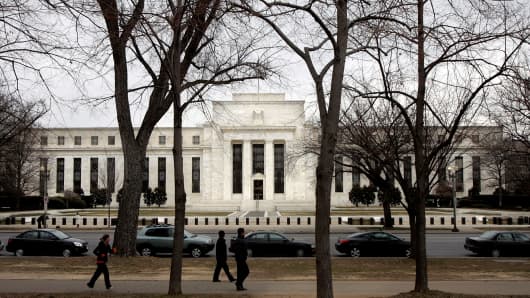Don't blame the banks
They may be doing something, but I don't see anything. All I read is an untimely and irrelevant guessing game by various Fed officials about the level of short-term interest rates at which they won't be able to serve banks' interest income on huge, and rapidly growing, excess reserves they hold at the Fed. And that is when the Fed is not berating the banks for all sorts of their alleged misdeeds.
That is unfortunate. At this point in the U.S. business cycle, a readily available and reasonably priced credit is crucially important because other determinants of household and business spending remain very weak. An unemployment rate of 7.3 percent, and the job insecurity it breeds, are serious impediments to consumer and business outlays. And so is a small, 0.9 percent, increase in the real personal disposable income during the first nine months of this year.
Under these circumstances, households are unlikely to draw down their savings balances to finance current consumption and maintain their customary lifestyles. Quite the opposite, they would be more inclined to pay back their loans and save – a behavioral feature one can deduce from a relatively stable average personal saving rate of 4.4 percent so far this year.
(Read more: Taper tease? Market worries Fed will end easing)
That cautious consumer mood is also reflected in household surveys. At the beginning of this month, some preliminary readings show consumer confidence falling to its lowest level since December 2011.
What is the way out of this?
As always, solutions have to come from appropriate monetary and fiscal policies.
Given that the fiscal policy is on automatic pilot, the Fed has a difficult task of finding a properly balanced policy mix. Whether such a judgment call is well served by a continuation of an extraordinary monetary easing is debatable, but it is absolutely certain that an expansionary credit policy is a correct response to Washington's indiscriminate and excessive fiscal tightening.
That is the policy mix we now have, and the one likely to remain in place for some time because budget issues have become hostage to seemingly unbridgeable political differences that will drive Congressional mid-term elections next year and presidential elections in 2016.
My guess is that the lingering uncertainties this will continue to generate will not be conducive to stronger consumption and investment spending.
(Read more: By not tapering, Fed actually increased stimulus)
But don't blame banks for that. They did not create these problems; policy makers did.
With every loan banks write, they are taking an investment decision whose expected income stream should be profitable. The fact that banks now apparently consider that their risk-adjusted return on consumer loans are lower than the 0.25 percent deposit rate at the Fed is a serious indictment of the monetary and fiscal policies they have to contend with.
Follow the author on Twitter @msiglobal9
Michael Ivanovitch is president of MSI Global, a New York-based economic research company. He also served as a senior economist at the OECD in Paris, international economist at the Federal Reserve Bank of New York and taught economics at Columbia.






